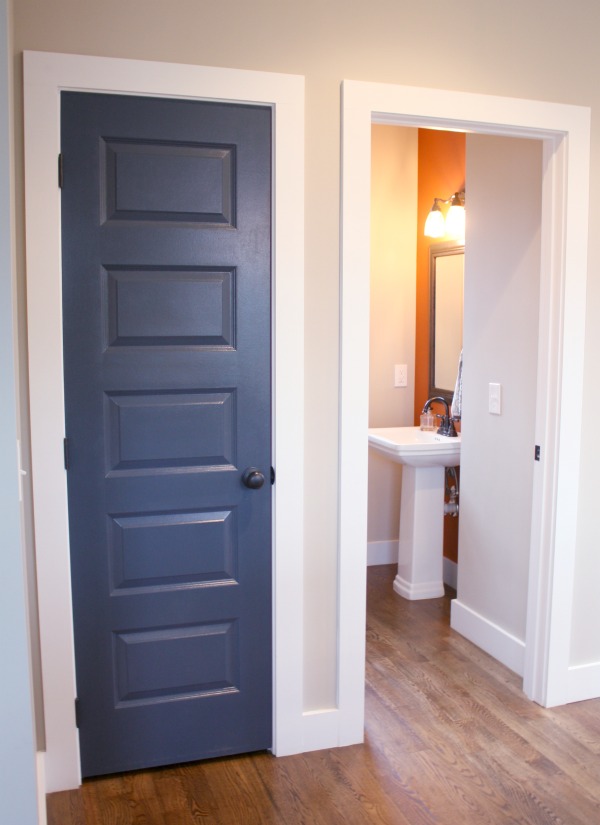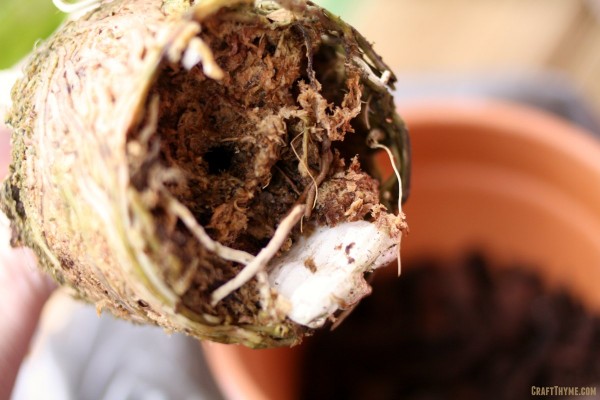
This is the first new construction house I have lived in. Yea for 90 degree angles, boo for lack of character and patina. Working to remedy the contractor white of the place led to a pantry door idea. I thought I would give it a quick makeover with some navy blue blue paint. Recalling an old Martha Stewart Article on doors, I thought it might be fun to also give the edge a pop. We had a bright orange left from painting an accent wall in the guest bathroom. Since the navy and orange accents flowed through the entire downstairs it seemed like a good fit.
Pantry Door Ideas: Make Over Time!
Materials:
- Paint
- Sponge Roller
- FrogTape
:* Yes it is expensive, yes it is a name brand, yes it is worth every single cent, and no sadly frog tape is NOT paying me to say that.

Quick Directions:
Paint the front of the door and then paint the edge… So sarcasm aside, it is close to that easy.
First, I carefully taped the white edge, wisely realizing that it would take a number of coats of orange to cover any navy that smudges. NOT!
Of course I didn’t tape the edge the first time around. But, I will get to that in a bit. I really wanted to take the door off the hinges, but it was impossible to get the last one loose. Because of that I had to work really fast to not make roller marks in the glossy navy paint while only using the smallest amount of paint possible so it didn’t run down the vertical surface. I failed, not once, not twice, but three coats. Every evening the light would shine off the marks roller marks where I had hit an area that dried to quickly. Ugh.
The only benefit of making that mistake is I had plenty of time to correct the door edge. What a P.I.T.A. I hate taping. Loath it. However, after the first coat of orange I realized nothing short of taping a nice clean edge was going to give the effect I wanted. I wanted the blue to show when closed and the orange to pop only when opening the door. Plus I wanted the edge to have a nice straight line. The door had a slight bevel that was not noticeable until you ran a roller over it and smear blue or orange the wrong direction. Seriously! Take the time to tape this project. I was so much happier with the details once it was complete.


















